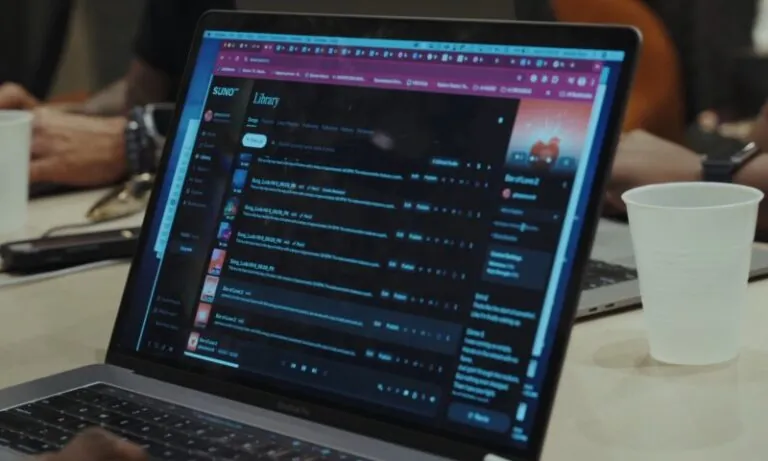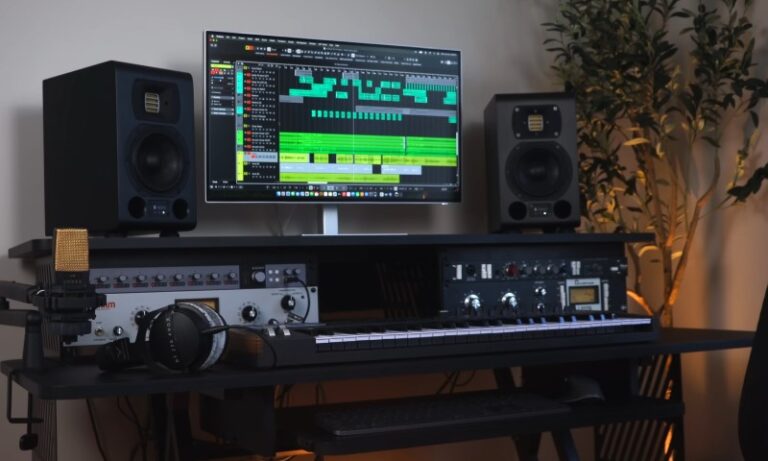In 2025, platform battles in the streaming world have reached new heights, and the question on everyone’s mind is simple: Is Kick or Twitch leading the pack?
Whether you’re a seasoned streamer, a casual viewer, or just curious about the evolving digital entertainment landscape, this guide will walk you through the facts, trends, and industry shifts.
We’ll cover how the Kick streaming platform and Twitch streaming platform stack up in 2025, what each offers to creators and audiences, and what this means for the future of live streaming.
From key features and creator earnings to viewer experiences and community engagement, this comprehensive article will give you everything you need to understand which platform is currently winning.
Streaming Platforms in 2025 – A Quick Overview

What Is Twitch?
The Twitch streaming platform, launched in 2011 and owned by Amazon, remains a household name. It dominates with a massive audience, millions of active streamers, and a strong ecosystem of monetization, including subscriptions, Bits, and ads.
Still, growing frustration over revenue splits and stricter policies has sparked a quiet wave of departures, with many questioning the real reason Twitch streamers are leaving.
Twitch is synonymous with gaming streams but has expanded into music, talk shows, and IRL (in real life) content.
What Is Kick?
The Kick streaming platform emerged in 2022 as a disruptor. Backed by Stake.com and designed to appeal to streamers tired of Twitch’s increasingly restrictive policies, Kick offers higher revenue splits (95/5) and a more relaxed content moderation approach.
Its growth has been explosive, drawing in both disillusioned Twitch stars and new creators seeking a better deal.
Head-to-Head: Kick vs Twitch in 2025
Audience Size and Growth
Twitch boasts over 200 million monthly active users globally in 2025, maintaining its reputation as the largest streaming platform by far. This vast audience cements Twitch’s dominance in the live streaming space, with a well-established ecosystem that attracts both content creators and viewers alike.
Over the years, Twitch has become synonymous with online streaming, providing a familiar and reliable platform for millions of users.
However, Kick, despite being a relatively new entrant, has experienced explosive growth with aggressive marketing campaigns, high-profile sponsorships, and a streamer-friendly approach that offers better revenue splits and looser content restrictions.
Kick has surged past 50 million monthly active users. This rapid rise has positioned Kick as a serious challenger to Twitch’s long-standing dominance. Kick’s growth rate has been significantly outpacing Twitch’s, sparking discussions about whether it could eventually catch up.
Yet, even with Kick’s momentum, Twitch continues to hold the lion’s share of the market, with its extensive user base and entrenched community culture remaining its most formidable assets.
Monetization Opportunities

Twitch retains its mixed monetization model, which includes subscriptions, Bits, and advertising, but its 50/50 revenue split on subscriptions and heavy reliance on ads have left many creators feeling disillusioned.
This revenue structure, which has long been a point of contention, has prompted streamers to voice frustrations about the limited income potential and increasing dependence on viewer-generated revenue through advertisements.
While Twitch has recently introduced adjustments, such as revamped Bits with more customization options, these changes often come with higher platform fees, further exacerbating creators’ concerns.
On the other hand, Kick’s monetization approach stands out as the most generous in the industry. With a 95/5 revenue split, Kick allows streamers to keep a significantly larger portion of their subscription income, providing a strong financial incentive to switch platforms.
Moreover, Kick offers creators greater control over ad placements, enabling them to tailor viewer experiences without intrusive ads. Kick has also rolled out innovative tipping tools, allowing fans to directly support their favorite streamers, with instant payouts and minimal platform interference.
This combination of generous revenue sharing, creative freedom, and audience-first monetization tools has positioned Kick as a compelling alternative for streamers seeking better financial returns and greater control over their content.
Content Diversity and Flexibility
Twitch offers a robust mix of content, ranging from gaming streams to IRL broadcasts, music performances, and educational sessions, making it one of the most versatile platforms in the streaming industry.
However, in recent years, Twitch has implemented stricter content moderation policies, banning certain types of content and introducing more rigid community guidelines.
While these measures aim to foster a safer and more inclusive environment, they have also driven some creators to seek alternative platforms where they can express themselves more freely. In contrast, Kick has positioned itself as the go-to destination for streamers seeking fewer restrictions and greater creative freedom.
Kick’s more lenient content moderation policies have created a space where edgier, experimental, and sometimes controversial content can thrive. However, this approach has not been without its challenges.
Critics argue that Kick’s relaxed stance on content moderation risks compromising overall content quality and viewer safety. Adding to the mix, Kick has made significant investments in niche and often controversial categories, including gambling and adult-oriented streams.
These moves have drawn both criticism and praise, with some praising the platform’s willingness to push boundaries and others expressing concerns about potential risks to younger audiences and the platform’s long-term reputation.
Despite these controversies, Kick’s approach to content flexibility continues to attract streamers looking for creative and financial opportunities beyond what Twitch offers.
Community Engagement and Culture

Twitch has cultivated a vibrant and deeply ingrained culture that revolves around custom emotes, channel raids, and enduring relationships between streamers and their fans. This strong sense of community is arguably Twitch’s greatest asset, fostering a space where viewers and creators can interact meaningfully and form lasting bonds.
The platform’s tools and features are designed to encourage engagement, from chat integrations to loyalty systems, creating a lively and inclusive environment that has become iconic in the world of streaming. Meanwhile, Kick’s community is much newer, characterized by its edgy and experimental nature.
While it lacks the maturity and depth of Twitch’s long-established culture, Kick is rapidly growing, drawing in audiences eager for fresh content and alternative experiences. Its openness to unconventional formats and creators has made it appealing to a diverse range of viewers and streamers alike.
Although Kick’s community is still in its formative stages, its rapid expansion and willingness to push boundaries suggest that it could evolve into a significant force in the streaming ecosystem in the years to come.
Both platforms, therefore, reflect different approaches to community engagement—Twitch with its polished, legacy-driven culture and Kick with its bold, evolving energy.
Technical Performance and User Experience
Twitch continues to lead with its rock-solid streaming infrastructure, delivering consistently low latency and high-quality performance across both mobile and desktop platforms. The platform’s long-standing reputation for reliability and seamless user experience is a testament to years of investment in backend technology and user-centric design.
Its polished apps make it easy for creators to stream and for viewers to engage, contributing to its status as the default choice for millions of users worldwide.
In contrast, Kick, while making rapid strides in platform stability and design, still grapples with occasional technical issues. As of 2025, users have reported sporadic outages, minor bugs, and interface glitches that disrupt the viewing and streaming experience.
However, Kick’s development team is actively working to address these challenges, and the platform’s technical performance has seen noticeable improvements since its early days.
Despite these growing pains, Kick’s continued focus on refining its infrastructure suggests that it is committed to providing a streaming experience that can eventually rival Twitch’s polished offerings. For now, though, Twitch remains the gold standard for technical performance in the streaming space.
Why Are Streamers Choosing Kick?
Many creators have flocked to the Kick streaming platform in search of better revenue opportunities and looser rules, driven by several compelling reasons that highlight the platform’s appeal. One of the biggest draws is the platform’s higher revenue split—streamers on Kick retain an impressive 95% of subscription income, compared to Twitch’s standard 50/50 split.
This means that creators can significantly increase their earnings from subscriptions, making it a desirable option for mid-level and emerging streamers who rely on these revenues to sustain their content.
In addition to the financial incentive, Kick also offers fewer restrictions on content, appealing to creators who feel constrained by Twitch’s increasingly stringent policies. Kick’s more permissive stance allows for a broader range of content types, including more controversial or edgy material that might not align with Twitch’s stricter guidelines.
This greater creative freedom enables streamers to experiment with new formats, push boundaries, and explore unique niches without the constant threat of bans or demonetization.
Another factor contributing to Kick’s popularity is its new and dynamic audience. The platform has attracted a younger, more adventurous demographic that is receptive to unconventional content and innovative streaming styles.
This openness creates fertile ground for creators to cultivate fresh communities and tap into emerging trends, which can help them stand out in a crowded marketplace.
Furthermore, Kick’s direct payment system offers a level of financial flexibility that is highly appealing to streamers. Unlike Twitch, where payout thresholds and processing delays are typical, Kick’s tipping system provides creators with instant access to their earnings.
This means streamers can convert viewer support into income with minimal delay, thereby enhancing their cash flow and gaining greater control over their finances.
Taken together, these features—superior revenue sharing, looser content policies, a vibrant and receptive audience, and immediate financial access—make Kick a beautiful alternative for creators seeking more autonomy, higher earning potential, and new opportunities in the ever-evolving streaming landscape.
- Higher Revenue Split: Creators keep 95% of subscription income.
- Fewer Restrictions: Kick permits more controversial or edgy content, appealing to some.
- New Audience: Kick’s user base is younger and more open to fresh formats.
- Direct Payments: Kick’s tipping system gives streamers immediate access to funds.
Why Do Some Still Prefer Twitch?
ICYMI – from new features to streamer love, here’s everything announced during the Opening Ceremony and Keynote feat. @MerryKish @djclancy999 💜
A thread 👇 pic.twitter.com/w8pCM0oAa2
— Twitch (@Twitch) May 31, 2025
Despite the growing popularity of Kick, many streamers and viewers still prefer the Twitch streaming platform, and several key factors explain its enduring appeal. First and foremost, brand trust plays a significant role.
Twitch has long been synonymous with live streaming, having built a strong reputation since its inception. This familiarity and credibility give streamers instant recognition and legitimacy in the eyes of both viewers and potential sponsors.
Newcomers and veterans alike view Twitch as the default choice for launching or growing a streaming career, as its name is closely tied to the concept of online streaming itself.
Another reason is Twitch’s larger audience, which remains its most compelling advantage. With over 200 million monthly active users worldwide in 2025, Twitch offers streamers unparalleled opportunities for discoverability and audience growth.
The platform’s sheer scale means that even niche content has the potential to attract significant followings, and the massive user base creates a dynamic environment where streamers can continually expand their reach.
Twitch also excels in providing community engagement tools that help streamers build loyal fan bases. Features like custom emotes, channel raids, interactive polls, and subscriber-only benefits create a vibrant and interactive experience for both streamers and viewers.
These tools foster deeper connections and a sense of belonging, encouraging audiences to return and participate actively in live chats and events. This strong emphasis on community-driven interaction sets Twitch apart from many competitors.
Finally, Twitch’s stable ecosystem remains a significant draw for creators. Its infrastructure has been tested and refined over the years, ensuring consistent and reliable streaming quality with minimal downtime and technical glitches.
The platform’s stability gives streamers confidence that their broadcasts will run smoothly, providing a hassle-free experience for both them and their viewers. Additionally, Twitch’s long-standing support system, including moderation tools and customer service, offers an added layer of security and professionalism that many creators value.
In summary, while Kick’s innovative features attract new streamers, Twitch’s combination of brand recognition, massive audience reach, superior community engagement tools, and a reliable infrastructure makes it the preferred choice for many creators who prioritize stability, growth potential, and credibility in their streaming careers.
- Brand Trust: Twitch is synonymous with live streaming, giving streamers instant credibility.
- Larger Audience: Twitch’s reach means more discoverability and potential viewer growth.
- Community Tools: Twitch offers unmatched community engagement tools, from raids to custom emotes.
- Stable Ecosystem: Twitch’s infrastructure is tried and tested, making it a safe choice.
Key Differences: Kick vs Twitch
| Feature | Kick | Twitch |
| Revenue Split | 95%/5% | 50%/50% |
| Monthly Active Users | 50+ million | 200+ million |
| Content Restrictions | Looser | Stricter |
| Monetization Options | Subscriptions, tips | Subscriptions, Bits, ads |
| Community Culture | New, edgy | Established, inclusive |
| Streaming Stability | Improving occasional outages | Highly stable |
| Mobile & Desktop Experience | Still maturing | Highly polished |
Common Questions About Kick and Twitch
The Future: Kick vs Twitch in 2025 and Beyond
@redditstories4247 Kick Vs. Twitch #streamer #clips #jakepaul #loganpaul #money #prime #fyp #interesting #adinross ♬ original sound – Reddit Stories and Clips
As of 2025, neither streaming platform can claim absolute dominance. Twitch holds onto its vast audience and strong infrastructure, while Kick’s rapid growth and streamer-friendly policies shake up the landscape.
Key trends to watch include:
- Kick’s Expansion: If Kick continues to invest in technology and moderation, it could close the gap with Twitch.
- Twitch’s Evolution: Twitch’s recent policy changes and creator incentives may help it retain top talent.
- New Competitors: Emerging platforms like YouTube Live and Facebook Gaming keep both Twitch and Kick on their toes.
Verdict: Who’s Winning?
In 2025, the answer isn’t black and white. Twitch remains the leader in size, stability, and community, but Kick is winning in revenue sharing and attracting disgruntled or experimental creators.
If you prioritize earnings and creative freedom, the Kick streaming platform might be the right choice. If you value reliability, a massive audience, and deep community tools, the Twitch streaming platform remains the go-to option.
The real winner? Viewers and creators alike, as competition pushes both platforms to improve.
Related Posts:
- The Real Reason Twitch Streamers Are Quietly Leaving…
- The Complete Beginner’s Guide to Kick Streaming -…
- Spotify vs YouTube for Podcasts - Which One is…
- Dynamic vs Condenser Mics - Which Is Best for Your…
- How to Choose the Right Podcast Hosting Platform in 2025
- Top 8 Podcasts to Help You Make Money on the Side in 2025









